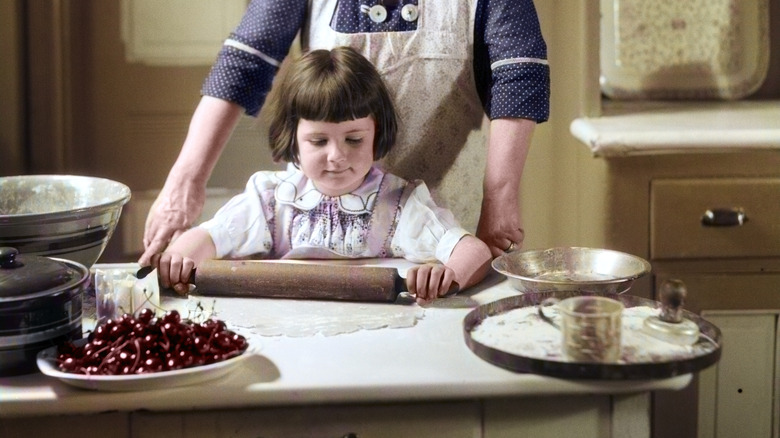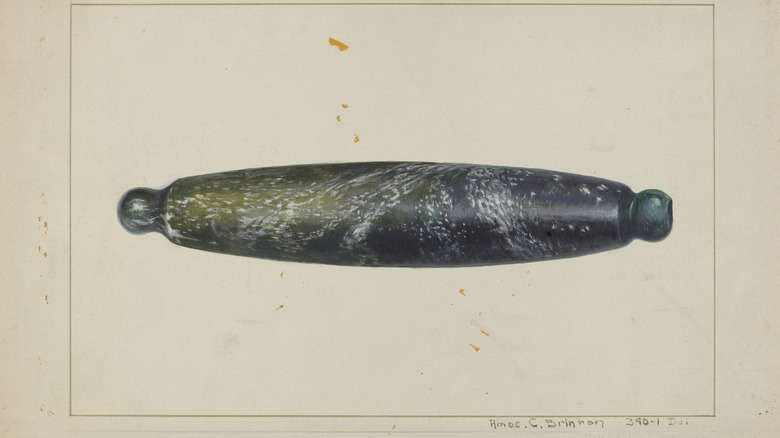How To Tell If Your Grandma's Rolling Pin Is Truly Vintage
It's not always easy to figure out what to do with inherited kitchen items. Should you keep the china set that's been passed down in your family for generations? Are those trinkets from the past century that your grandma used worth anything? The annoying answer is that it depends. For instance, old Tupperware can actually snatch a fairly good price, so listing it might be worth the effort. Other pieces simply have sentimental value that makes them important. In the case of vintage rolling pins, both could be true. Depending on the style, material, and age, your grandma's rolling pin could be worth hundreds of dollars. If it's exceptionally rare, that figure could go up to the thousands. Because these items have stayed fairly consistent in their form throughout history, it can be difficult to tell whether they're actually vintage. Some people sell imitation vintage rolling pins, adding further to the confusion. Thankfully, there are some tell-tale signs that will help you determine whether your rolling pin is worth much.
The most obvious sign that a rolling pin is very old is its material. Wood has always been the preferred choice for making this common kitchen item, but you'll also find pins made with porcelain, marble, or glass. These alternative materials are rarely used today to make rolling pins. They tend to be more expensive than wood, so imitators are less likely to work with them. If you find a non-wooden rolling pin, there's a good chance that it's vintage.
Other things to look out for when thrifting rolling pins
Besides the material, pay attention to functionality. Pins used to be popular gifts. Many had sentimental messages written or printed on top of the roll and came with a hanging string for easy display. Some glass and marble pins had openings in the handles so they could be filled with salt or herbs. These gift pins were uncommonly pretty because they were meant to be used on special occasions or not at all. Since displaying pins isn't common anymore, decorative pins are usually vintage.
Things get a bit more complicated when it comes to wood. Older wooden rolling pins can look nearly identical to contemporary ones, but the devil's in the details. Older rolling pins were sometimes made by hand, so they may have imperfections like uneven handles. Factory-made pins can also be vintage. Early 20th-century ones will occasionally have printed advertisements or messages that reveal their age.
Rolling pin hobbyists will often work with wood. They'll even paint the pins to imitate a worn-out, older look or add printed advertisements that look like they're from the early 1900s. In this case, ask the seller questions or use your best judgment. Read descriptions carefully to make sure you're buying the real deal when shopping online. Etsy normally labels true vintage items as "handpicked by" rather than "made by." Once you have a vintage rolling pin in your hands, try making some delicious, comeback-worthy vintage foods like chess pie.

